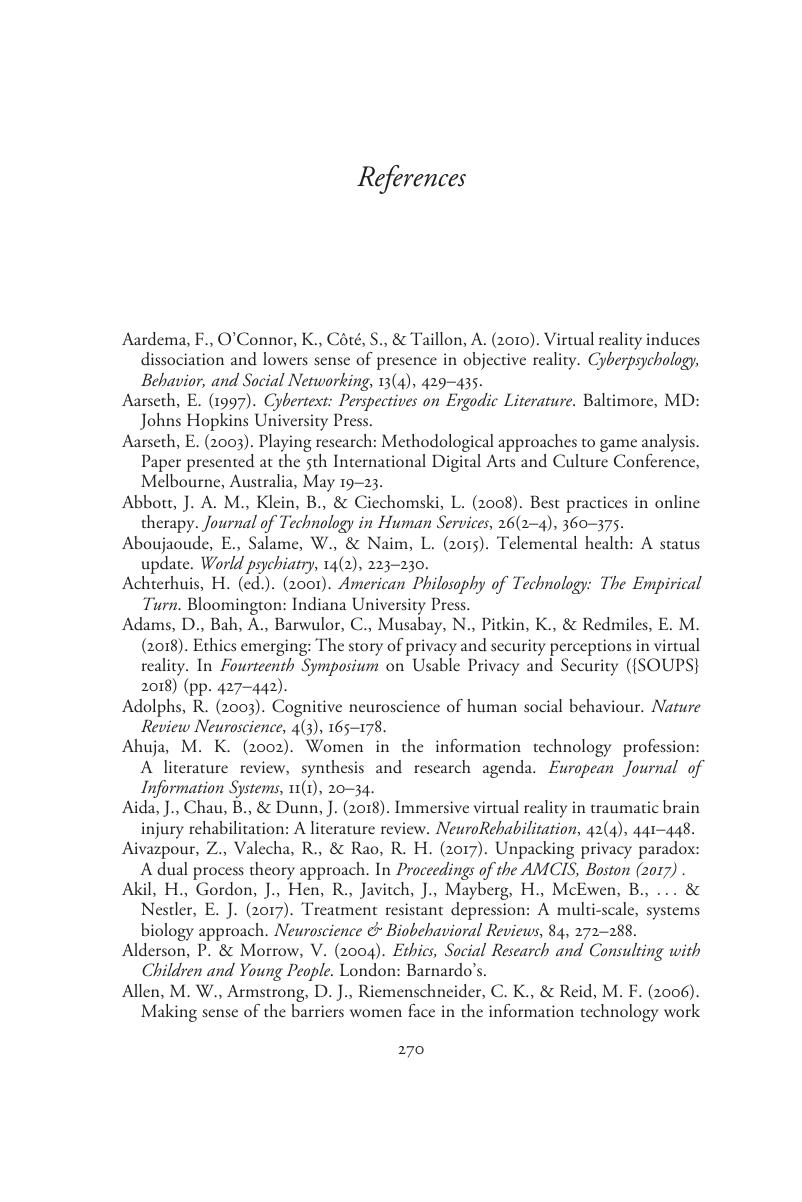Book contents
- Ethical Challenges in Digital Psychology and Cyberpsychology
- Ethical Challenges in Digital Psychology and Cyberpsychology
- Copyright page
- Dedication
- Contents
- Figures
- Tables
- Preface
- Acknowledgments
- Part I Introduction
- Part II Ethical Cyberpsychology Research and Interventions with Special Populations
- Part III Ethical Issues in Social Media and Internet Research
- Part IV Applied Ethical Considerations
- References
- Author Index
- Subject Index
- References
References
Published online by Cambridge University Press: 07 November 2019
- Ethical Challenges in Digital Psychology and Cyberpsychology
- Ethical Challenges in Digital Psychology and Cyberpsychology
- Copyright page
- Dedication
- Contents
- Figures
- Tables
- Preface
- Acknowledgments
- Part I Introduction
- Part II Ethical Cyberpsychology Research and Interventions with Special Populations
- Part III Ethical Issues in Social Media and Internet Research
- Part IV Applied Ethical Considerations
- References
- Author Index
- Subject Index
- References
Summary

- Type
- Chapter
- Information
- Ethical Challenges in Digital Psychology and Cyberpsychology , pp. 270 - 321Publisher: Cambridge University PressPrint publication year: 2019



